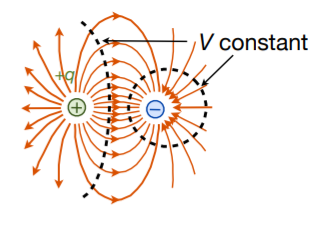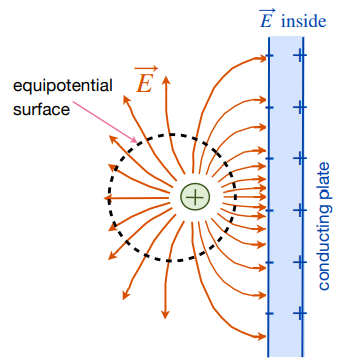PX157 - B9 - potential gradients
equipotential surfaces
- surfaces of constant potential
- from here:
- assume that the points, and , are infinitesimally close:
- assume that the points, and lie on the same equipotential surface:
- is tangential to the equipotential surface. hence, is perpendicular to the equipotential surface

- in a conductor, , and equipotential volume

potential gradients
- this is true also if and are infinitesimally close:
- , and
- eg: a ring of charges
- and because expect an extremum (minimum/maximum) on x-axis
&= \frac{Q}{4\pi\epsilon_{0}} \frac{x}{(x^{2}+a^{2})^{\frac{3}{2}}} \hat x
\end{align*}$$
potential of an ideal dipole

